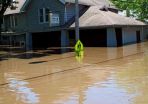"This report and its large collection of quantitative data will become in our view an important and transparent instrument for strengthening doctoral education in the United States," said the presidents of the National Academy of Sciences, National Academy of Engineering, and Institute of Medicine in a foreword to the assessment. NAS President Ralph Cicerone, NAE President Charles Vest, and IOM president Harvey Fineberg serve on the governing board for the National Research Council. "All those interested in graduate education can learn much from studying the data, comparing programs, and drawing lessons for how programs can be improved," they added.
The assessment includes a report explaining the study committee's methodology and general findings about doctoral education, along with an Excel spreadsheet containing data on characteristics for each program. The spreadsheets also include five sets of illustrative rankings that show how the data can be used to compare programs based on the importance of particular program characteristics to various users -- in this case, to faculty at participating universities. The rankings are not endorsed by the Research Council as an authoritative conclusion about the relative quality of doctoral programs, but illustrate the kinds of valuations that can be generated from the data.
A spreadsheet containing the data and illustrative rankings for all programs can be found at http://www.nap.edu/rdp, along with the full text of the report and a detailed guide to the study's methodology.
The assessment provides data on the following characteristics for participating Ph.D. programs. The data were collected from institutions for academic year 2005-2006 through questionnaires distributed to faculty, administrators, and students, as well as from public sources. The data set will allow universities to update key information on a regular basis.
Publications per faculty member Citations per publication Percent faculty with grants Awards per faculty member Percent interdisciplinary faculty Percent non-Asian minority faculty Percent female faculty Average GRE scores Percent 1st-yr. students with full support Percent 1st-yr. students with external funding Percent non-Asian minority students Percent female students Percent international students Average PhDs, 2002 to 2006 Average completion percentage Median time to degree Percent students with academic plans Student work space Student health insurance Number of student activities offered
Illustrative Rankings Based on Data, Faculty Values
The data presented in the assessment also were incorporated into illustrative rankings of programs in each field. While the illustrative rankings should not be interpreted as definitive conclusions about the relative quality of doctoral programs, they provide important insights on how programs can be ranked according to different criteria and on the characteristics faculty value most.
Two different methods were used to determine how much importance or "weight" faculty in each field attach to 20 different program characteristics (19 in the case of computer science and the humanities fields). These weights were then applied to data on the characteristics for all of the programs in the field, resulting in two sets of illustrative rankings for each program. The illustrative rankings are given as ranges of numbers -- rather than a strict "1,2,3"-style ordering of programs -- to reflect some of the uncertainties inherent in any effort to rank programs by quality.
In addition to these two "overall" ranges of rankings, illustrative rankings are included for each program for three separate aspects of graduate education: the research activity of program faculty, student support and outcomes, and diversity of the academic environment.
The report urges prospective students, administrators, faculty members, and others to consider which characteristics are most important to them and to compare programs accordingly. Tutorials that demonstrate how to use the spreadsheets to compare programs can be found at http://www.nap.edu/rdp. In addition, PhDs.org, an independent web site not affiliated with the National Research Council, has incorporated data from the assessment into its Graduate School Guide. Users of PhDs.org's Guide can assign weights to the program characteristics measured by NRC and others, and rank graduate programs according to their own priorities.
Trends in U.S. Doctoral Education
The study committee also assessed the data to discern trends in U.S. doctoral education since the National Research Council's last assessment was released in 1995, based on data collected for 1993. The following comparisons are limited to programs that participated in both studies.
The number of students enrolled has increased in engineering by 4 percent and in the physical sciences by 9 percent but has declined in the social sciences by 5 percent and the humanities by 12 percent.
On average, all fields have seen a growth in the percentage of female students. The smallest growth -- 3.4 percent -- was in the humanities, which were already heavily female; the greatest growth was in engineering, where female enrollment grew by 9 percent, increasing to 22 percent overall.
The percentage of Ph.D.s awarded to students from underrepresented minority groups has increased for all fields. For example, minority Ph.D.s increased from 5.2 percent to 10.1 percent in engineering, and from 5 percent to 14.4 percent in the social sciences.
The report also includes general findings on doctoral education in the U.S. -- for example, on the amount of time it takes students to finish their degrees. Over 50 percent of students in agricultural science and engineering complete their degrees in six years or less, while only 37 percent of those in the social sciences do -- the same percentage of humanities students who complete by eight years.
###
The National Academy of Sciences, National Academy of Engineering, Institute of Medicine, and National Research Council make up the National Academies. They are independent, nonprofit institutions that provide science, technology, and health policy advice under an 1863 congressional charter. A committee roster follows.
Copies of A Data-Based Assessment of Research-Doctorate Programs in the United States are available from the National Academies Press; tel. 202-334-3313 or 1-800-624-6242 or on the Internet at http://www.nap.edu. Reporters may obtain a copy from the Office of News and Public Information (contacts listed below).
Contacts: Sara Frueh, Media Relations Officer
Christopher White, Media Relations Assistant
Office of News and Public Information
202-334-2138; e-mail
[ This news release and report are available at http://national-academies.org ]
NATIONAL RESEARCH COUNCIL
Division on Policy and Global Affairs
Board on Higher Education and Workforce
Committee on Assessment of Research-Doctorate Programs
Jeremiah P. Ostriker1 (chair)
Professor
Department of Astrophysical
Sciences, and
Provost Emeritus
Princeton University
Princeton, N.J.
Virginia S. Hinshaw (vice chair)
Chancellor
University of Hawaii
Honolulu
Elton D. Aberle
Dean Emeritus
College of Agriculture and Life Sciences
University of Wisconsin
Madison
Norman M. Bradburn
Tiffany and Margaret Blake
Distinguished Service Professor
Emeritus
University of Chicago
Bethesda, Md.
John I. Brauman1
J.G. Jackson-C.J. Wood Professor of Chemistry
Department of Chemistry
Stanford University
Stanford, Calif.
Paul W. Holland
Independent Consultant
Paul Holland Consulting Corp.
Princeton, N.J.
Eric W. Kaler2
Provost and Senior Vice President
for Academic Affairs
Stony Brook University
Stony Brook, N.Y.
Earl Lewis
Provost and Executive Vice President for Academic Affairs and Professor
Department of History and African- American Studies
Emory University
Atlanta
Joan F. Lorden
Provost and Vice Chancellor of Academic Affairs
University of North Carolina
Charlotte
Carol B. Lynch
Senior Scholar
Council of Graduate Schools
Dean Emerita
University of Colorado
Boulder
Robert M. Nerem2 3
Parker H. Petit Professor and Director
Institute for Bioengineering and Bioscience
Georgia Institute of Technology
Atlanta
Suzanne Ortega
Provost
University of New Mexico
Albuquerque
Robert J. Spinrad2 *
Vice President
Technology Strategy
Xerox Corp. (retired)
Palo Alto, Calif.
Catharine R. Stimpson
University Professor and Dean
Graduate School of Arts and Sciences
Faculty of Arts and Science
New York University
New York City
Richard P. Wheeler
Interim Vice Chancellor for Academic Affairs
University of Illinois
Urbana-Champaign
STAFF
Charlotte Kuh
Study Director
1 Member, National Academy of Sciences
2 Member, National Academy of Engineering
3 Member, Institute of Medicine
* Deceased
END

